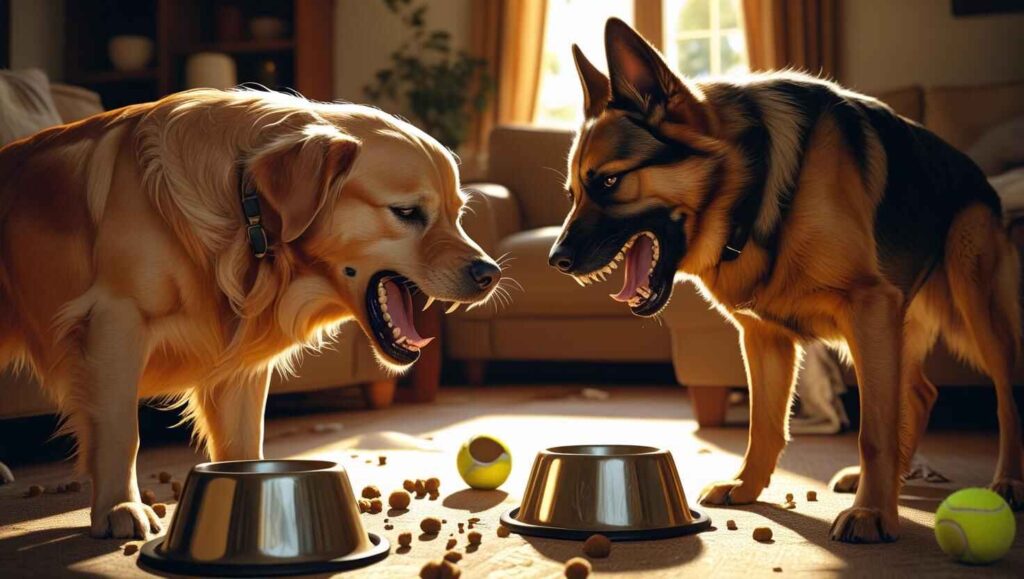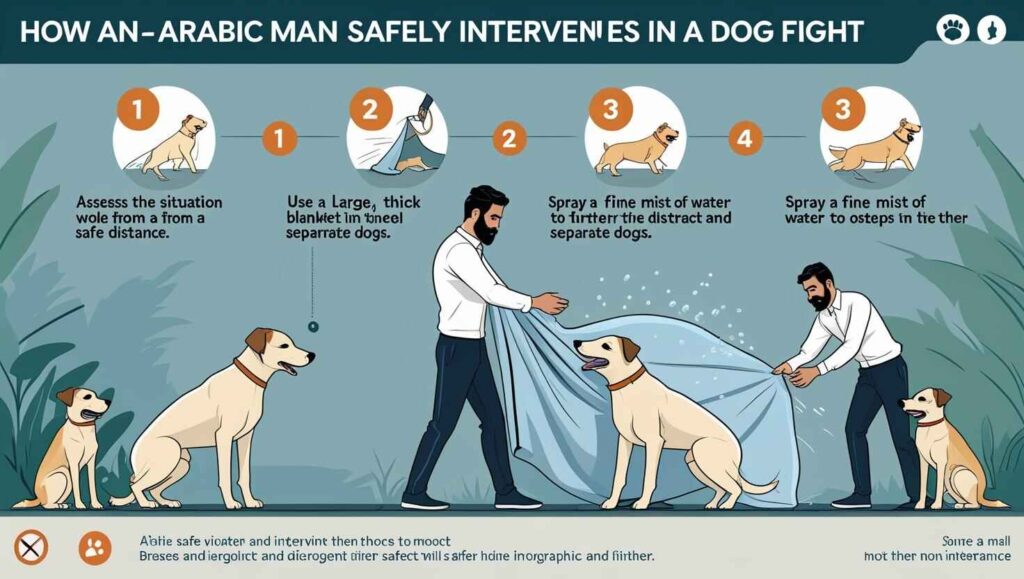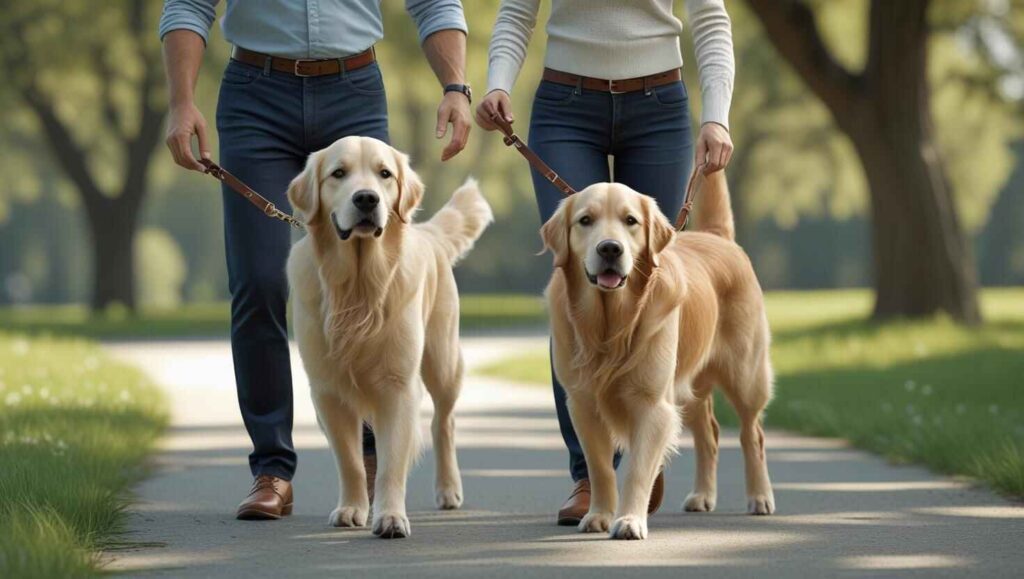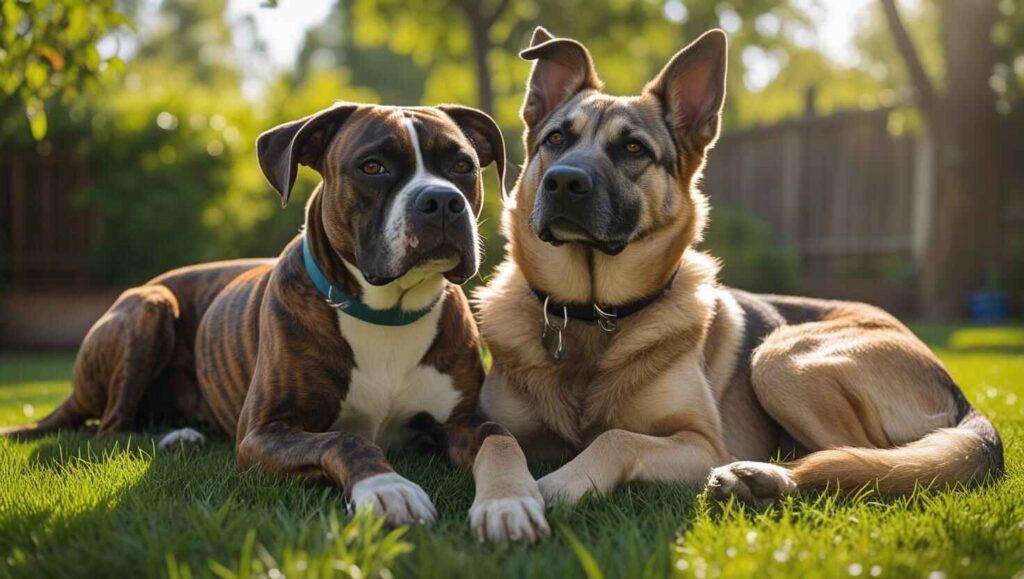🐶 Understanding Why Dogs Fight at Home
Dogs living under the same roof may still get into fights. To truly find lasting peace, it’s important to get to the heart of what’s causing the issue

🏡 Territorial Behavior
Dogs are naturally territorial. If one dog feels another is invading their space, conflict can erupt—especially after a recent move or new pet addition.
🦴 Resource Guarding
Resource guarding happens when dogs protect food, toys, or even humans. This often leads to growling or snapping, especially during feeding or playtime.
🐕 Lack of Socialization or Hierarchy Conflicts
Dogs that weren’t properly socialized or have similar dominant personalities may struggle to establish a peaceful hierarchy.
🛑 Immediate Steps to Break Up a Dog Fight Safely
Never use your hands to separate fighting dogs! Here are safe alternatives.
🔧 Tools and Techniques You Can Use
- Loud noises: Clapping or banging a pot may startle them apart.
- Water spray: Use a spray bottle or hose to interrupt aggression.
- Blanket drop: Quickly throw a blanket over the dogs to distract and confuse them, helping to break up the fight safely
- Break stick or barrier: Use a broom or chair to create distance.

❌ What Not to Do During a Dog Fight
- Don’t grab collars – you risk being bitten.
- Don’t scream or hit – it escalates aggression.
- Don’t try to punish afterward – dogs won’t connect it to the fight.
📘 Step-by-Step Guide to Prevent Future Dog Fights
Prevention is the best way to stop fights before they start.
✅ Rule #1: Separate and Reintroduce Properly
After a serious fight, give each dog space. Reintroduce gradually over several days using:
- Parallel leash walks
- Barrier greetings (like baby gates)
- Short supervised sessions
🧭 Rule #2: Establish Clear Leadership and Routine
Dogs need structure. Feed them on a schedule, reward good behavior, and discourage dominance posturing.
👀 Rule #3: Supervise All Interactions Initially
Always monitor interactions after a fight, especially around:
- Food
- Toys
- High-energy play
Use leashes indoors if needed.

🎓 Training Techniques to Promote Harmony
🐾 Positive Reinforcement for Calm Behavior
Reward your dogs when they display calm, non-reactive behavior around each other using treats, praise, or play.
🎯 Desensitization and Counter-Conditioning
Gradually expose your dogs to each other at safe distances and pair the experience with positive reinforcement.
📞 When to Call a Professional Behaviorist
If:
- Fights are frequent or intense
- One dog is seriously injured
- You feel unsafe managing the dogs
Then it’s time to consult a certified canine behaviorist. They can tailor a behavior modification plan.
Find a certified behaviorist via IAABC
⚖️ Pros and Cons of Rehoming One Dog
| Pros | Cons |
|---|---|
| Peaceful environment | Emotional toll on the family |
| Safety for all pets | Difficult to find a suitable home |
| Reduced stress | Possible guilt or regret |
❗ Risks of Letting Dogs “Work It Out” Themselves
Many owners hope dogs will “sort it out,” but this can be dangerous. Risks include:
- Escalating injuries
- Long-term resentment
- Human injury during breakups
🏡 Managing Multi-Dog Households Long Term
Living with multiple dogs doesn’t have to be chaotic.
🍽️ Feeding Time Tips
- Use separate bowls in different areas
- Supervise meals
- Remove bowls after feeding
🧸 Toy and Space Management
- Remove high-value toys when unsupervised
- Provide individual resting spaces
- Train “leave it” and “place” commands
❓ FAQs
1. Can dogs live together again after a serious fight?
Yes, but it requires gradual reintroduction, training, and supervision. Consult a professional for severe cases.
2. Should I punish my dogs after a fight?
No. Dogs won’t understand delayed punishment. Instead, reinforce good behavior and manage triggers.
3. How do I know if my dogs will fight again?
Watch for stiff body language, hard stares, or guarding behavior. If these signs appear, separate them and consult a trainer.
4. What breeds are more prone to household aggression?
Breeds with strong guarding or territorial instincts may have more challenges, but any breed can develop issues. It’s more about the individual dog and training.
5. How long should I keep dogs separated after a fight?
Start with 24–48 hours, then slowly reintroduce using neutral ground and positive associations.
6. Can neutering reduce aggression between dogs?
In some cases, yes—especially in male dogs. But it’s not a guaranteed solution and should be combined with behavioral training.
✅ Conclusion: Creating a Calm and Happy Pack
When dogs living under the same roof start fighting, it can be really upsetting. But don’t worry—with the right understanding, calm patience, and a bit of structure, harmony can return to your home. Just remember, progress takes time.
- Understand the root cause
- Use safe breakup methods
- Train and supervise consistently
- Don’t hesitate to call a professional
Peaceful multi-dog living is possible—and well worth the effort for a happy, safe home for both you and your pups.
# :You may also like:



